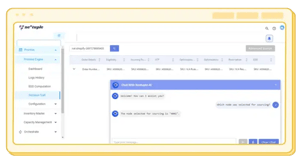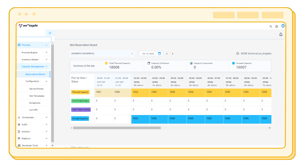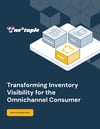
Promise & Inventory
Need to promise better pickup or delivery dates? Refresh your Legacy OMS with profitable promising and real-time inventory from Nextuple’s Order Management Studio.
NEW! AI-Powered Predictive Order Promising
If you would like to learn more about our Predictive Order Promising, which leverages AI and ML to accurately predict the outbound processing lead times for fulfillment centers, stores, drop-ship, and marketplace vendors as well as shipping transit times from carriers. Model your inbound supplier lead time and processing times, like yard receiving to support B2B promising. Click Let's Chat on the right and we will reach out to schedule some time with you.The Promise & Inventory Module offers four major composable microservices that can work independently or together to provide you with the features and flexibility you need: Promising (EDD), inventory, sourcing and capacity. These services enable to you to provide accurate delivery dates on your B2C or B2B shopping experience at scale, serve up real time, segmented inventory pictures to your sales channels and select fulfillment nodes based on your business rules and costs.

ARCHITECTURE
Promising Architecture Fit
Inventory Microservice
An inventory service for the modern demands of Omnichannel commerce.
- Three decoupled microservices providing real time scalable inventory data across your enterprise.
- Our Demand and Supply, ATP, and SAVR (Snapshot, Audit, Visibility, Reconciliation) microservices provides enterprise grade features, performance, and traceability to manage your inventory across multiple sales and fulfillment channels.
- A single source of inventory data for your sales channels that can improve your turns, reduce cancels, increase your fill rate, and drive top line revenue by allowing you to share inventory data up the shopping funnel and with your marketplace partners.
- Need to know a specific available-to-promise (ATP) or understand complex node selections? Just ask our AI Chatbot that delivers instant, accurate answers, empowering you to manage your inventory with unmatched efficiency and accuracy.
Promising Microservice
Use our promise engine to drive conversion, mitigate cost and shape demand at the same time.
- Enable accurate delivery date promising on search, PLP and PDP pages informed by your sourcing rules – allowing you to keep the promises you make.
- New! Leverage our Predictive AI Promising to make a specific promise based on your real-world network performance. Drive conversion while dramatically lowering the maintenance and analysis typically required with maintaining an accurate promise.
- Our Promising Microservice allows you to make promises based on speed, split reduction, or cost optimization but more importantly allows you to add new costs or penalties as you grow in complexity – without development.
- Enhance your promises based on customer type, channel sales goals, product attributes, location capacity, and node cutoffs.
Sourcing Microservice
A new approach to Sourcing. Less dials and more explainability.
- Our sourcing engine delivers a framework to easily add new data sources and then configure, not code, new cost-based sourcing rules and penalties.
- Set up simple cost templates based on zone, product and carrier costs.
- Prove these out through our embedded simulation engine and promote to production.
- World class traceability through an LLM allows you to see where why decisions were made to improve confidence.
- Ability to assign custom relative weights to different optimization strategies (priority, speed, split) and determine the overall best optimal sourcing solution.
- Use any order or line attribute to drive sourcing decisions.

Capacity Microservice
Manage capacity across multiple dimensions of your Omnichannel Fulfillment processes.
- Manage capacity across assets such as carriers, nodes, labor, and fulfillment types (Same Day, BOPIS, Ship-from-store, etc.)
- Define capacity across multiple units of measure such as units, lines, shipments, orders, or custom values.
- Manage capacity in various ways, such as cutoffs, capacity slots, and rolling consumption.
- Use an intuitive UI for set up and management and dashboards to isolate and solve capacity issues.

Get Your Free Value Assessment Today
This six-hour workshop will identify the value Nextuple can bring to your organization. We’ll engage key business leaders, IT and operational executives in a collaborative discovery process to uncover improvements in revenue, efficiency and customer experience. Within 2 weeks of the workshop, we'll provide the documented business case and roadmap to maximize your business potential.
RESOURCES
Why choose a microservice-based promise solution
Learn how modern microservice-based Promising solutions can improve your customer experience with real-time inventory and promise calculations.







